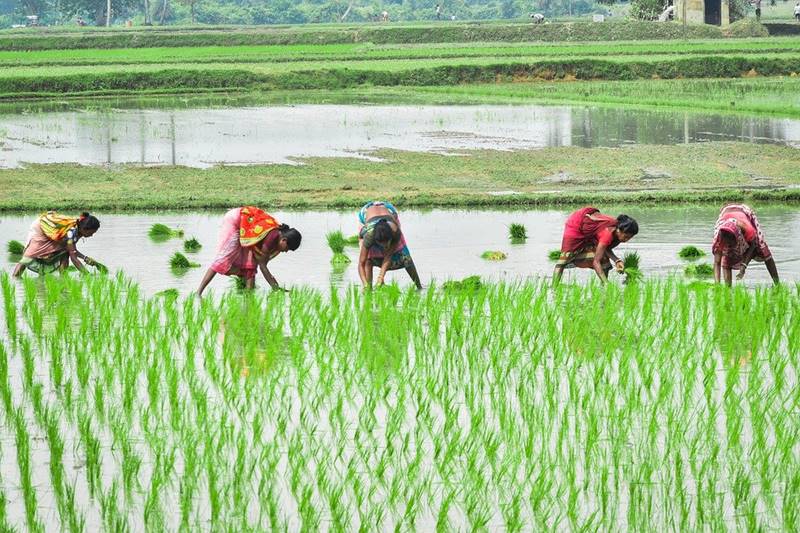A study conducted by climate researchers at the Indian Institute of Technology Bombay (IIT-B) has found that excessive irrigation in northern India shifts the September monsoon rainfall towards the northwestern part of the country, increasing the chances of crop failure for paddy farmers.
The research published in the journal ‘Geophysical Research Letters’ pointed out that in India, irrigation is exercised in an uncontrolled, unplanned manner.
Explaining the relationship between irrigation practices and monsoon rainfall, Subimal Ghosh, the researcher from IIT-B told Gaon Connection: “When evaporation happens on a large scale, cooling takes place, and the temperature in the region drops down. For instance, if we are wet, water evaporates from our body, and we feel cool.”
“The monsoon winds are normally driven by the thermal contrast. When they get cooled down due to large scale irrigation, the temperature difference affects rainfall in the region. The moistue-laden winds move towards regions where temperature is comparatively higher such as the northwestern parts of the country,” he added.
Supported by the Department of Science and Technology and his climate group, Ghosh, Convener at Interdisciplinary Programme in Climate Studies (IDPCS) — a Centre of Excellence at IIT-Bombay — investigated the impact of agricultural water use on the Indian summer monsoon using a climate model. Ghosh is also a professor in the Department of Civil Engineering at the Mumbai-based institute.
Paddy being a major crop in the northern parts is cultivated by planting it in a submerged field. This results in a lot of evapotranspiration — the sum of evaporation from the land surface plus transpiration from plants. In other words, when a lot of moisture is generated from the land, the moisture is again precipitated on the land creating an overall cooling effect. This drives the monsoon laden winds towards higher temperature areas which lie in the north-west.
Also Read: Burdened by rising diesel prices and increasing irrigation cost, paddy farmers reduce their acreage
Meanwhile, the press statement issued by the Ministry of Science & Technology noted on July 5 that South Asia is one of the most heavily irrigated regions of the world. Therefore, “it was pertinent to study how such practices can influence the monsoons which form the fulcrum of this agro-based economy,” reads the statement.
As per the study, monsoon precipitation is sensitive to the choice of irrigation practices in South Asia and it can help plan agricultural practices in the region.
Increasing rainfall in Central India
The research also highlighted that extreme rainfall in recent decades in Central India has been increasing and this is also caused by an increase in irrigation and consequent increase in evapotranspiration.
“There is a huge increase in widespread extreme events in Central India. This year in June, the region received heavy rainfall. It was a three-fold increase over the last fifty six years,” Ghosh further explained.
Also Read: More than four people died every day in India in 2020 due to extreme weather events: IMD report
Ghosh also highlighted that in terms of moisture contribution, land is the second highest contributor after the Arabian sea.
“We found that this irrigation is also pumping a lot of moisture towards intensifying rainfall. When extreme weather events are on the rise, it affects agricultural productivity and results in crop failure risks,” he added.
In another study by IIT-B, published in ‘Environmental Research Letters’, the researchers have identified that risks for rice and wheat crops have increased in the recent decade, with wheat at a two-fold higher risk factor than rice.
“The wheat risk is also attributed to increasing minimum temperatures during the crop growing season. This study provided compelling evidence indicating that the hydro-climatic hazards related to precipitation extremes and drought are specifically alarmingly increasing the crops risk as compared to temperature extremes,” it warned.


















